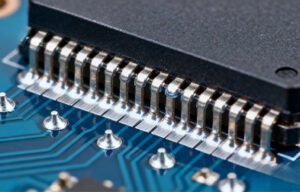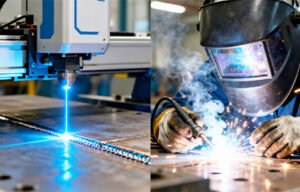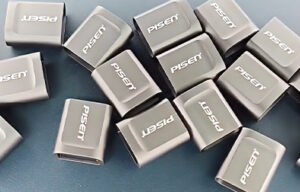Laser Welding Machine for Mold Repair | Precise and Cost-effective Mold Refurbishment
Introduction to Mold Repair and the Role of Laser Welding
Molds are essential in manufacturing industries such as automotive, electronics, plastic, and die-casting. Over time, these molds wear out or develop minor defects due to continuous usage. Traditionally, repairing these molds required time-consuming and costly processes. However, the emergence of laser welding technology has transformed the mold repair landscape.
Laser welding machines offer a non-contact, high-precision, and low-heat input solution that can efficiently restore molds to their original condition, minimizing material waste and maximizing mold life.
What is a Laser Welding Machine
A laser welding machine uses a concentrated laser beam to melt and fuse metal surfaces together. Unlike traditional welding methods, laser welding is precise, stable, and controllable. It’s especially effective for micro-welding applications, which makes it ideal for mold repair.
There are various types of laser welding machines used in the industry, including:
Continuous fiber laser welding machines
Pulsed laser welding machines
Desktop laser welding systems
Each type offers unique benefits depending on the mold material, defect size, and repair accuracy requirements.
Why Use Laser Welding for Mold Repair
Laser welding is the preferred method for mold repair due to the following reasons:
High Precision: Capable of welding with spot sizes as small as 0.2mm, perfect for intricate mold details.
Minimal Heat Affected Zone (HAZ): Reduces the risk of thermal deformation and micro-cracks.
No Material Loss: Only the necessary area is melted and fused, preserving mold geometry.
Compatible with Various Metals: Suitable for repairing steel, aluminum, copper, and titanium molds.
Clean Process: Little to no post-weld finishing is required.
Applications of Laser Welding in Mold Repair
Laser welding machines are used in a wide range of mold repair scenarios:
Plastic Injection Mold Repair: Filling surface cracks, edge chipping, and resizing parting lines.
Die-casting Mold Maintenance: Repairing erosion, porosity, and weld seams without altering the base material.
Tool and Die Repair: Fixing core pin damage, surface pitting, and corner wear.
Precision Mold Components: Restoring ejector pins, cavities, and intricate mold inserts.
Advantages of Laser Welding over Traditional Welding
| Feature | Laser Welding | Traditional Welding |
|---|---|---|
| Heat Affected Zone | Very Small | Large |
| Welding Precision | High | Low to Medium |
| Post-processing | Minimal | Required |
| Downtime | Low | High |
| Material Compatibility | Excellent | Limited |
| Equipment Footprint | Compact | Bulky |
Laser welding minimizes downtime, reduces scrap rates, and enhances overall repair quality compared to gas tungsten arc welding (GTAW) or metal inert gas welding (MIG).
How to Choose the Right Laser Welding Machine for Mold Repair
When selecting a laser welding machine for mold repair, consider the following factors:
Laser Type: Pulsed lasers are ideal for precision repair, while continuous lasers are suitable for deeper penetration.
Power Output: Choose power between 100W to 300W depending on mold material and damage depth.
Control System: Opt for CNC-controlled laser welding machines for programmable precision.
Portability: Desktop systems work best for small parts, while larger systems are suited for industrial-scale molds.
Cooling System: Integrated cooling improves laser stability during prolonged use.
Working with a professional laser machine manufacturer ensures proper machine configuration for your repair needs.
Case Studies: Laser Mold Repair in Action
Automotive Mold Repair
A car parts manufacturer used a 200W pulsed laser welding machine to repair worn injection molds. The result: over 50% reduction in downtime and 30% cost savings in mold replacement.
Electronics Industry Application
Micro-cracks on a smartphone mold insert were fixed using a high-precision desktop laser welder. The repair preserved the mold’s intricate pattern without distortion, enabling continued use without replacement.
Maintenance Tips for Laser Welding Machines
Regular Lens Cleaning: Keeps laser output stable.
Check Laser Alignment: Ensures consistent weld precision.
Monitor Cooling System: Prevents overheating during long sessions.
Software Updates: Keep control systems current for best performance.
Trained Operators: Skilled technicians improve machine lifespan and repair results.
Preventive maintenance not only prolongs the life of your equipment but also ensures optimal repair quality.
Conclusion
Laser welding machines have become an indispensable tool for mold repair in modern manufacturing. With unmatched precision, low thermal impact, and material compatibility, they provide a cost-effective solution for extending mold life and reducing waste. Whether you’re in automotive, electronics, or tooling, investing in a reliable laser welding system can revolutionize your maintenance process and significantly boost production efficiency.
111-1024x458.png)


